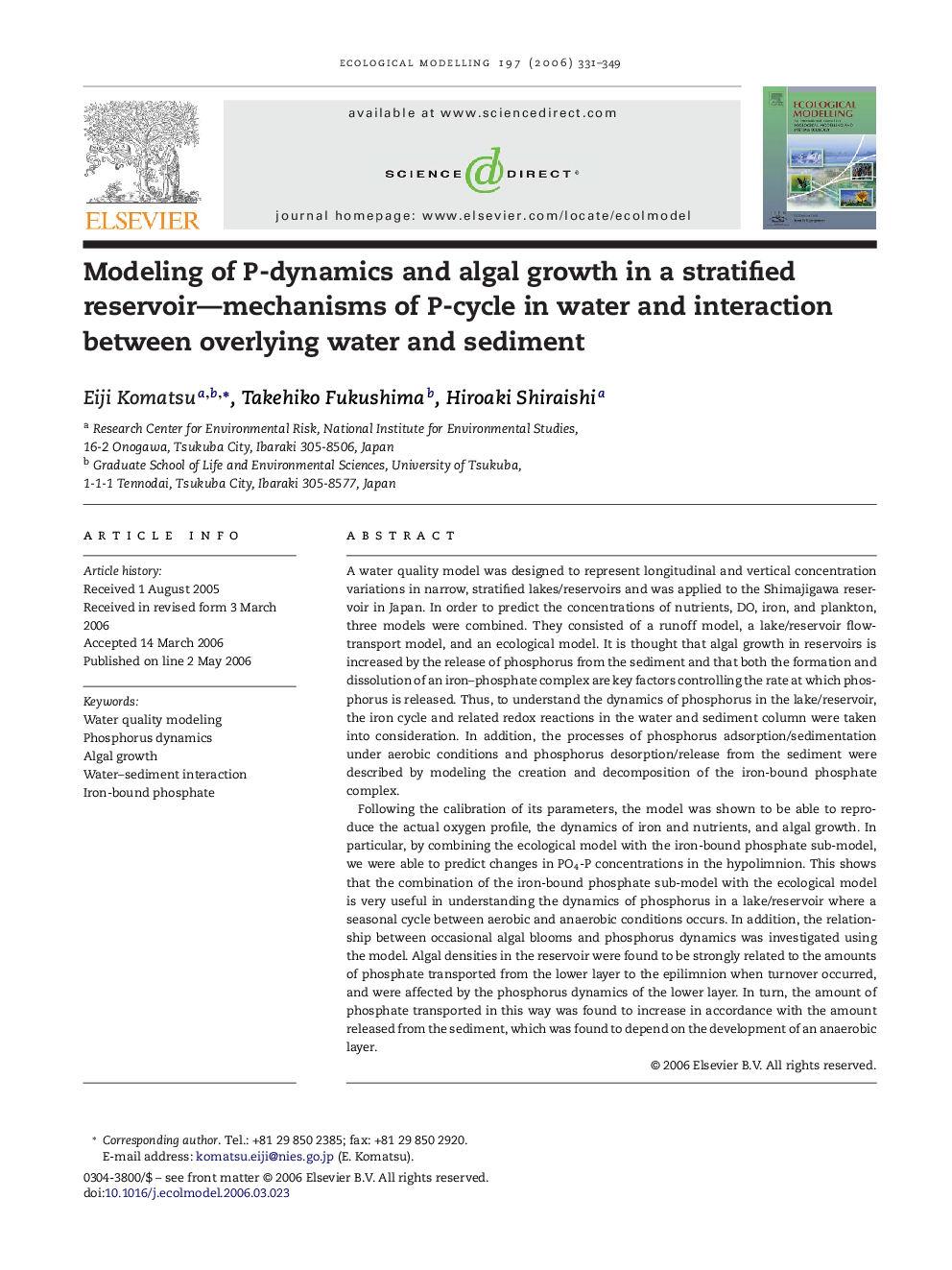| Article ID | Journal | Published Year | Pages | File Type |
|---|---|---|---|---|
| 4379214 | Ecological Modelling | 2006 | 19 Pages |
A water quality model was designed to represent longitudinal and vertical concentration variations in narrow, stratified lakes/reservoirs and was applied to the Shimajigawa reservoir in Japan. In order to predict the concentrations of nutrients, DO, iron, and plankton, three models were combined. They consisted of a runoff model, a lake/reservoir flow-transport model, and an ecological model. It is thought that algal growth in reservoirs is increased by the release of phosphorus from the sediment and that both the formation and dissolution of an iron–phosphate complex are key factors controlling the rate at which phosphorus is released. Thus, to understand the dynamics of phosphorus in the lake/reservoir, the iron cycle and related redox reactions in the water and sediment column were taken into consideration. In addition, the processes of phosphorus adsorption/sedimentation under aerobic conditions and phosphorus desorption/release from the sediment were described by modeling the creation and decomposition of the iron-bound phosphate complex.Following the calibration of its parameters, the model was shown to be able to reproduce the actual oxygen profile, the dynamics of iron and nutrients, and algal growth. In particular, by combining the ecological model with the iron-bound phosphate sub-model, we were able to predict changes in PO4-P concentrations in the hypolimnion. This shows that the combination of the iron-bound phosphate sub-model with the ecological model is very useful in understanding the dynamics of phosphorus in a lake/reservoir where a seasonal cycle between aerobic and anaerobic conditions occurs. In addition, the relationship between occasional algal blooms and phosphorus dynamics was investigated using the model. Algal densities in the reservoir were found to be strongly related to the amounts of phosphate transported from the lower layer to the epilimnion when turnover occurred, and were affected by the phosphorus dynamics of the lower layer. In turn, the amount of phosphate transported in this way was found to increase in accordance with the amount released from the sediment, which was found to depend on the development of an anaerobic layer.
